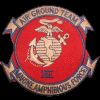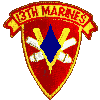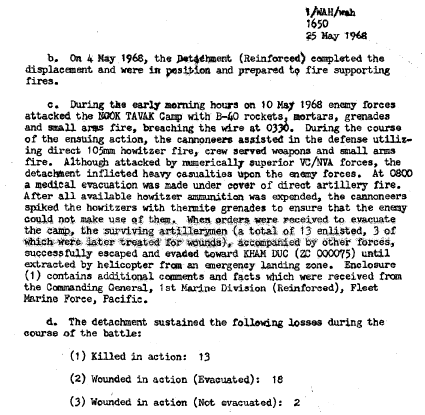| |
|
|
|
Raymond Thomas Heyne
Lance Corporal
D BTRY, 2ND BN, 13TH MARINES, 1ST MARDIV, III MAF United States Marine Corps Mason, Wisconsin July 15, 1947 to May 10, 1968 RAYMOND T HEYNE is on the Wall at Panel 58E, Line 9 See the full profile or name rubbing for Raymond Heyne |
   |
 |
|
Ray (or Butch as we called him) was a very loving and hard working young man. He was very proud to be in the US Marine Corps, having enlisted right out of high school. Butch has two other living sisters, 7 nephews, and 16 nieces. He was preceded in death by his parents, a brother Joseph, and a sister that died in a tragic accident in 1986. Butch had lived with my husband and me and our family at Rt 2 Mason, Wisconsin before he joined the Marines. We were notified this summer that they were excavating in the area of the battle ... some human remains were found. It was a kind of "Closure" to see a film sent to us by a very caring person who was there, working on the repatriation ... it is of a helicopter flying over Vietnam, and actually some film of Nagok Tavok and the excavation itself ... for 30 years we knew next to nothing of this area. It was very much appreciated as well as pictures taken by another group at an earlier date, and a bit of soil and more pictures of the men working on the repatriations, sent to me by another individual, plus pictures of a ceremony when a bit of the soil of Ngok Tavok was being mixed with the soil above the names of these men at the Vietnam Memorial in Washington. These men are very involved and interested in the return of their friends and fellow Marines they had to leave behind. I cannot thank these wonderful men enough... We had visited the Wall in DC 12 years ago ... we left one of his favorite records, "The Green Green Grass of Home", a rose, and a letter from his older sister.
Butch died in the same battle as
William McGonigle
From Ray's sister, 17 Apr 2007 On October 7, 2005 L/Cpl Raymond T. Heyne's identified remains were buried next to the group of unidentified remains of the 12 men killed at Ngok Tavak, South Vietnam May 10, 1968, at Arlington National Cemetery, Washington DC. John and I and Ray's whole family are so grateful to Tim Brown and his Team Bravo for initiating the search for these men. There are just no words capable of expressing our gratitude. This endeavor was also accomplished through the efforts of the Pentagon, the Joint POW/MIA Accounting Command (JPAC), the co-operation of the Vietnam Government as host nation, Joint Task Force Full Accountability, Joint Field Activities, Linguists, Explosive Ordinance Technicians, Media, Mortuary Affairs Specialists, and others. Thank You. The excavations under the direction of Forensic Archaeologists began several years ago at Ngok Tavak. The repatriation of remains through search and recovery resumed once again May 6, 1999. In the spring of 2005 Raymond and four other Marines were positively identified through Mitochondrial DNA. Thank You also to all the survivors of Ngok Tavak/Kham Duc who provided such wonderful hospitality to all of the families while we were in Washington for the services. You are such a wonderful group. I'd like to thank all the families for their continuing friendship. It was wonderful to finally meet you all. Thank you to the Virginia Chapter of Rolling Thunder for your participation at Arlington, and to the Wisconsin Rolling Thunder Chapter for their participation at the Repatriation Ceremony for Ray by the Northland Vietnam Veteran's Association in Duluth, Minnesota, at their Vietnam Memorial on September 16, 2005. And Thank You to all who had a part in their return and in the beautiful services for these 12 men. Thank you, Hattie and Brian, the Casualty Officers who were so kind and helped so much in arranging this service at Arlington. He is home. After 37 years, he is home. Thank You to all who made this possible.
"Those who live in the hearts of others shall never die"
Janice and John Kostello |
|
I hope the heroes of Delta 2-13 at Ngok Tavak come home soon. I served with HQ 2-13 and Echo 2-13 during June 1968 into September 1968. I remember a memorial for them when I first arrived at HQ-2-13. I really didn't know what it was all about. I was brand new.
Snuffy (Joe) Jackson 18 Aug 2005 Lance Corporal Heyne will be buried at Arlington in October 2005 at the same time as the others being buried.
From a member of HQ and Echo Batteries, 2-13, |
|
"Butch" was my uncle ... however he was raised as my brother. I still remember the day we found out he was killed, 37 years ago last May. It was a very confusing time, as much was not being told. However, due to the efforts of a great bunch of men, our questions were finally answered at a reunion in Alexandria, Va. and the burial of their remains in Arlington Cemetary. I want to thank all those great guys for enduring the pain of remembering, to relate to us the story of Ngok Tavok. These men were very young and yet so very brave. I am glad that they did not risk the loss of another life to bring out the dead. They are a great bunch of people and their lives are of value to all of us. The dead we will have to await the resurrection, to see them again. I await that day.
From his niece, |
A Note from The Virtual WallIn the spring of 1968 the North Vietnamese Army's 2nd Division was enroute to South Vietnam, moving down the Ho Chi Minh trail in Laos. By early May, the division's advance regiments - the 1st and 2nd Regiments - had entered South Vietnam using the French-built Route 14 which passed by the old French fort at Ngok Tavak. The NVA commanders decided that Ngok Tavak and the main Special Forces camp at Kham Duc had to go.Beginning at about 0300 on 10 May 1968, Ngok Tavak came under heavy attack by a North Vietnamese Army infantry battalion, an element of the 2nd NVA Regiment. In a pitched battle, the small force of defenders staved off immediate defeat, but by noon on 10 May it was clear that Ngok Tavak would have to be abandoned. Surrounded on three sides by the 2nd NVA Regiment, it was clear the withdrawal would have to be by foot moving to the north - the attacking force had made a helicopter evacuation impossible. After destroying equipment and supplies which could not be carried out, the survivors began the move to the main camp at Kham Duc, proceeding along a lane flanked by near-continuous air strikes. They were picked up by helicopter midway to Kham Duc, arriving at the camp at about 2100 (9 PM) on 10 May. The defending force at Ngok Tavak had incurred numerous losses in both known dead and missing soldiers and Marines:
In a sense, the survivors of Ngok Tavok jumped from the frying pan into the fire - Kham Duc itself was under heavy attack. What happened next is covered on The Virtual Wall's
Kham Duc memorial.
The following text is exerpted from the 2nd Bn, 13th Marines' Command Chronology for May 1968; it addresses the D Battery detachment sent to Ngok Tavak:

Several pages further on is a list of the 43 Marines and one Navy Corpsman in the detachment; of the 44, 13 were dead (11 not recovered); 18 wounded had been medevaced by helo; and 13 moved out by ground with the other survivors. The detachment was recommended for a Meritorious Unit Citation; a portion of the text notes that "During the helicopter evacuation, members of the Detachment voluntarily remained on the ground to provide security until the rest of the survivors had been extracted and the last helo was ready to depart."
|
| Contact Us | © Copyright 1997-2019 www.VirtualWall.org, Ltd ®(TM) | Last update 08/15/2019. |